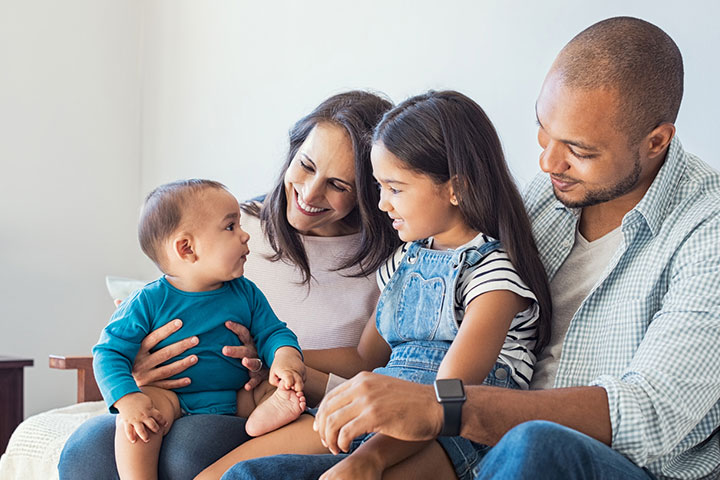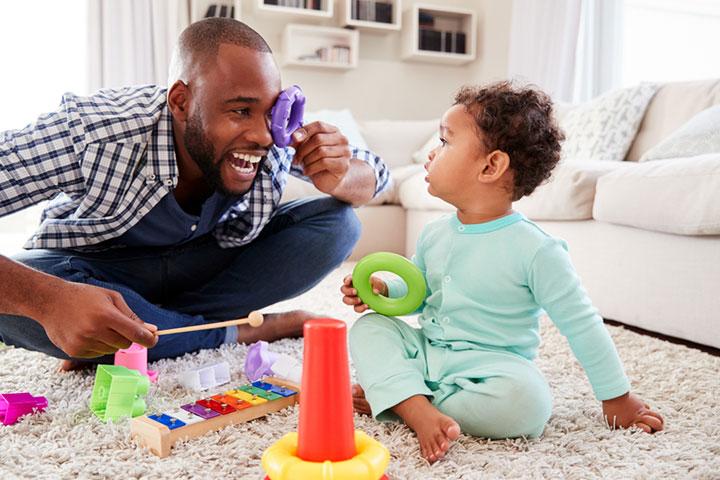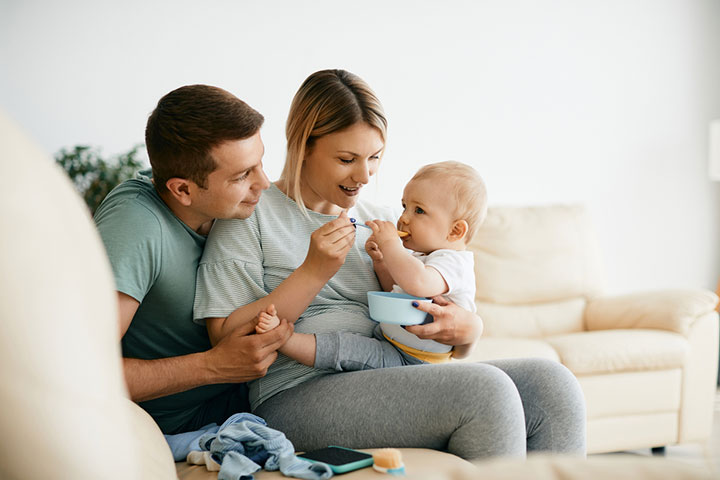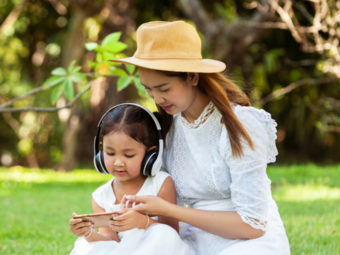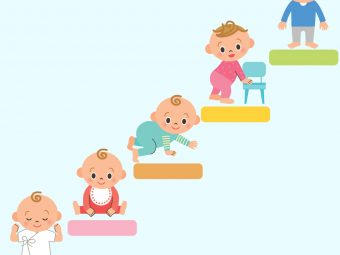
Image: Shutterstock
Social referencing is a phenomenon when babies and young children learn to respond according to their parents’ expressions and those around them. But what is the significance of “social referencing in a child’s development?” and how does it help your little ones develop emotions? This post discusses the principle of social referencing and how it impacts a child’s overall growth and development.
What Is Social Referencing In Infants?
Image: IStock
The definition of Social referencing psychology is the process by which infants take cues from emotive displays of adults (parents or caregivers) to form their responses to certain events or their environment and adjust their behavior towards other people and objects. The affective or emotive display of adults can be through facial expressions, vocal sounds or body language. Social referencing is a vital tool that helps infants to get a sense of their new environment and the people and objects that form a part of it (1).
Children Using Social Referencing
Image: IStock
Infants as young as six months of age begin to use social referencing as a way to gain deeper understanding of their immediate environment. As they grow older, kids begin to use social referencing more than earlier. By the age of 18 months, your child may be using your affective displays to form responses for all his actions.
Babies may use social referencing for many things. For example, he sees a new shiny object on the floor and is obviously intrigued by it. He looks at you to see if it is okay for him to touch it. Your smile or frown can act as referencing tools for your baby and will determine if he proceeds to touch the object or avoid it.
The Role Of Social Referencing In Your Child’s Development
Not much clinical research exists on the relation between development of cognitive skills and social referencing. It is also not clear how social referencing differs for every individual. But researchers have pointed out many ways by which social referencing aids a child’s development.
- Social referencing also aids your child’s emotional development. Infants learn the meaning of different emotive expressions, accompanying sounds and how they relate to different people and things.
- Babies use social referencing to make decisions about what actions they need to take. It then becomes their first foray into crucial decision-making skills to use later in life.
Image: IStock
- Infants also begin to understand positive and negative connotations derived from different expressions. It may not be clear from their behavior at that age. But learning the concepts begins with social referencing among other things such as their home environment.
Using Social Referencing For Your Child’s Development
Parents and caregivers can use social referencing for babies and toddlers as a teaching tool. You can do so by being more mindful about how you react to people or situations and how you keep the ambiguity out of your body language and voice to a minimum.
- Use facial expressions when playing and interacting with your child. Let him see your emotive displays at close range for a better understanding of what they could mean for different situations. The way you react to other people and objects could affect how your child also reacts to them.
- Ensure that your voice syncs with your body language when you are around your child. You may pretend to greet a neighbor with a smile but if internally you are not happy about it, it can show up as ambiguity in your body language and vocal tones. These cues may be subtle, but your infant may pick on them and become confused by his difficulty to grasp them fully.
Image: IStock
- Use social referencing to teach your child new things such as making decisions about food choices. Your expressions can be crucial to your child willing to try new food groups.
- Social referencing, thus, affects the emotional development of your child and it begins in his infancy. It is best to use this tool for the maximum benefit of your child through mindfulness and awareness of your reactions.
Image: IStock
Frequently Asked Questions
1. What role does social referencing play in language development?
Social referencing plays a key role in language development in children. By observing and mimicking the behaviors and expressions of others, children learn to understand and use language in meaningful ways. Through social referencing, children can understand the emotional state of others and use that information to regulate their behavior. Additionally, how adults respond to the child’s gestures and sounds helps shape the child’s early understanding of language, contributing to the development of their communication skills (1) (2).
2. Does social referencing ever stop?
Social referencing, which refers to seeking and using social cues from others to help guide one’s behavior, does not necessarily stop at any specific age but can continue throughout one’s lifetime (3). However, the ways in which people engage in social referencing can change as they grow and develop and as their social and cultural contexts change. For example, as children mature and become more independent, they may rely less on direct cues from others and instead use more subtle, indirect cues to inform their behavior.
Although there is not much clinical evidence, some researchers have found that there could be a significant role of social referencing in a child’s development. From early stages, infants and young children begin to use social referencing to relate to people’s emotions, learn intents, and decide how to act in response to a situation, person, or surroundings. You may use this process as a tool to guide your little one by being a good role model and interacting with them with the correct expressions and body language. This will help promote decision-making skills and the overall development of your child.
Infographic: Scientific Findings Regarding Social Referencing In Infants
Social referencing is an important psychological phenomenon that may affect an infant’s overall development. It helps babies understand their environment and react to it. The infographic below summarizes some interesting findings about social referencing in infants.

Illustration: Momjunction Design Team
Get high-quality PDF version by clicking below.
Download Infographic
Key Pointers
- Newborns and young children learn to react to the facial expressions of their parents and those around them through social referencing.
- Seeing the emotional expressions of adults helps infants learn how to react to situations and modify their behavior toward people and objects.
- Infants as young as six months old can use social reference to comprehend their world more deeply.
- Social referencing teaches children the meaning of various emotive expressions, which can contribute to their emotional growth.
- Social referencing is crucial for promoting decision-making skills and overall growth in a child’s development.
References:
- Social Referencing.
https://www.depauw.edu/learn/lab/publications/documents/infant%20development/ - Language Development in Children: 0-8 years
https://raisingchildren.net.au/babies/development/language-development/language-development - Social Referencing: Defining and Delineating a Basic Process of Emotion
https://idlab.ucmerced.edu/sites/idlab.ucmerced.edu/files/page/documents/walle_reschke_knothe_-_revision_2.pdf



